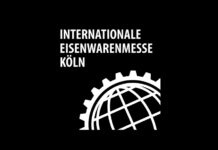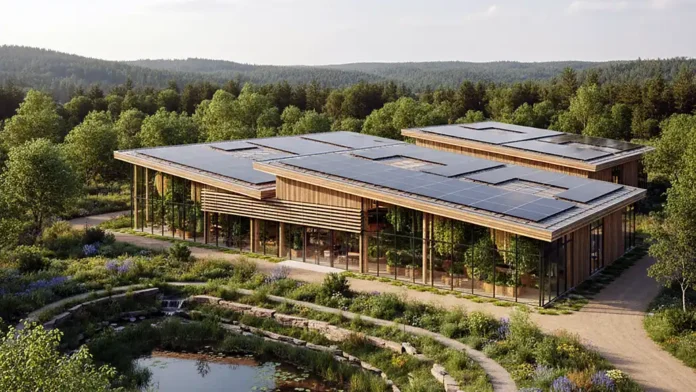Lighting for Sustainability and Energy Efficiency in Modern Infrastructure
The imperative for environmental responsibility in contemporary construction has positioned sustainable lighting energy efficiency strategies as essential components of green infrastructure development. Modern lighting systems must demonstrate measurable environmental benefits while supporting the functional, aesthetic, and economic objectives that drive infrastructure investment decisions across public and private sectors.
Green Building Standards and Certification Requirements
Contemporary green building certification programs including LEED, BREEAM, and ENERGY STAR have established specific requirements for lighting system performance that influence design decisions throughout the building development process. These standards recognize lighting as a significant energy consumption category while acknowledging its critical role in supporting building functionality and occupant satisfaction.
Sustainable lighting energy efficiency compliance requires careful attention to system efficacy, control capabilities, and operational characteristics that extend beyond simple equipment selection to encompass comprehensive design approaches that optimize performance throughout building lifecycle. Point calculations and energy modeling demonstrate compliance while supporting more informed design decision-making.
The integration of lighting performance requirements with broader building energy systems creates opportunities for synergistic approaches that optimize overall building performance rather than addressing lighting systems in isolation. Heat recovery from LED systems, coordination with HVAC systems, and integration with renewable energy sources demonstrate these collaborative approaches.
LED Technology and Energy Performance
Light-emitting diode technology has fundamentally transformed sustainable lighting possibilities by providing dramatically improved energy efficiency while offering enhanced control capabilities and extended service life compared to traditional lighting technologies. Modern LED systems achieve efficacy levels that were impossible with previous technologies while providing superior color rendering and controllability.
The total energy consumption of lighting systems encompasses not only the energy consumed by light sources but also the energy required for control systems, emergency lighting, and auxiliary equipment that can significantly impact overall system efficiency. Comprehensive energy analysis addresses all system components to optimize total energy performance.
Heat generation from lighting systems affects building cooling loads and must be considered in comprehensive energy analysis that addresses the interaction between lighting and HVAC systems. LED technology reduces thermal loads compared to traditional lighting while creating opportunities for heat recovery in appropriate applications.
Daylight Integration and Natural Light Optimization
Daylight harvesting represents one of the most effective strategies for reducing lighting energy consumption while creating interior environments that feel connected to outdoor conditions. Modern daylight harvesting systems use photosensors and automated controls to adjust artificial lighting levels based on available natural light while maintaining consistent illumination levels for occupant activities.
The design of building envelope systems significantly impacts daylight availability and quality, creating opportunities for integrated design approaches that optimize both daylighting and artificial lighting performance. Advanced glazing systems, light shelves, and architectural features that redirect daylight can dramatically reduce artificial lighting requirements while enhancing occupant comfort.
Glare control strategies must balance daylight utilization with visual comfort requirements that affect occupant satisfaction and productivity. Automated shading systems, electrochromic glazing, and interior light management systems provide dynamic glare control while maximizing daylight utilization throughout various sun conditions and seasons.
Advanced Control Systems and Automation
Intelligent lighting control systems enable sophisticated energy management strategies that respond to occupancy patterns, daylight conditions, and time-based requirements while maintaining appropriate illumination levels for building activities. These systems provide both energy savings and enhanced functionality compared to traditional switching approaches.
Occupancy-based control strategies reduce energy consumption in unoccupied spaces while providing immediate illumination when spaces are in use. Modern occupancy sensors provide reliable detection while avoiding false triggering that can compromise user satisfaction and energy performance objectives.
Demand response capabilities enable lighting systems to participate in utility programs that reward energy conservation during peak demand periods. These systems provide additional economic benefits while supporting grid stability and environmental goals through load management during critical periods.
Renewable Energy Integration
Solar-powered lighting systems provide opportunities for truly sustainable exterior lighting applications while demonstrating commitment to renewable energy utilization. These systems require careful sizing and battery management to ensure reliable performance throughout seasonal variations and extended cloudy periods.
Integration with building-integrated photovoltaic systems and other renewable energy sources enables lighting systems to operate with minimal grid electricity consumption while contributing to overall building energy independence. Energy storage systems and grid-tie capabilities provide backup power while supporting building energy management objectives.
Microgrid applications for campus and district lighting systems demonstrate scalable approaches to renewable energy integration that can serve multiple buildings while providing energy security and environmental benefits. These systems require sophisticated energy management but can provide significant long-term environmental and economic benefits.
Life Cycle Assessment and Environmental Impact
Comprehensive environmental analysis of lighting systems must consider not only operational energy consumption but also manufacturing impacts, transportation requirements, installation processes, and end-of-life disposal or recycling implications. Life cycle assessment provides framework for evaluating total environmental impact throughout system lifecycle.
Material selection for lighting systems affects both environmental impact and system performance, with considerations including recycled content, manufacturing processes, durability, and recyclability at end of service life. Sustainable material specifications support environmental goals while maintaining performance and economic objectives.
Maintenance requirements and replacement schedules significantly impact total environmental footprint of lighting installations, with longer-lasting systems providing environmental benefits through reduced replacement frequency and associated transportation and installation impacts. LED technology provides particular advantages in this regard through extended service life and reduced maintenance requirements.
Economic Analysis and Return on Investment
The economic justification for sustainable lighting systems encompasses both energy cost savings and broader economic benefits including maintenance cost reduction, productivity enhancement, and property value improvement. Comprehensive economic analysis addresses these multiple benefit categories while considering total cost of ownership throughout system lifecycle.
Utility incentive programs and rebates often provide significant economic support for energy-efficient lighting installations while reducing payback periods and improving return on investment calculations. These programs vary significantly between different utility territories but can provide substantial financial support for appropriate projects.
Financing options including energy service company arrangements and on-bill financing can address initial cost barriers while ensuring professional system design and maintenance throughout operational life. These approaches often result in immediate positive cash flow while providing performance guarantees that protect building owners from performance risks.
Smart Grid Integration and Demand Management
Modern lighting systems can participate in smart grid programs that provide additional revenue opportunities while supporting grid stability and renewable energy integration. These programs require communications capabilities and control flexibility but can provide ongoing economic benefits while demonstrating environmental leadership.
Energy storage integration enables lighting systems to operate during power outages while providing grid services including peak shaving and load balancing that support broader energy system efficiency. Battery systems require additional investment but provide multiple benefits including energy security and grid support capabilities.
Real-time energy monitoring and reporting capabilities enable facility managers to track lighting energy consumption while identifying optimization opportunities that can further improve system performance. These capabilities support both operational efficiency and sustainability reporting requirements for green building certification maintenance.
Innovation in Sustainable Lighting Technologies
Emerging technologies including organic LED systems, quantum dot enhancements, and advanced optical systems promise further improvements in sustainable lighting energy efficiency while expanding design possibilities. These technologies require evaluation for specific applications but may provide advantages in particular situations.
Wireless power transmission and energy harvesting technologies represent potential future opportunities for lighting systems that require minimal infrastructure while providing flexible installation options. These technologies remain experimental but may become viable for specialized applications as development continues.
Integration with Internet of Things platforms and artificial intelligence systems enables increasingly sophisticated energy management that learns from usage patterns while optimizing performance automatically. These systems promise to further improve energy efficiency while reducing operational complexity for building management teams.
Policy and Regulatory Compliance
Energy efficiency standards and building codes increasingly mandate minimum lighting performance requirements that affect system design decisions while supporting broader environmental goals. Understanding and complying with applicable standards ensures legal compliance while supporting market transformation toward more efficient technologies.
Carbon emission reporting requirements for commercial buildings often include detailed lighting energy consumption analysis that affects system selection and operational strategies. These requirements support climate goals while creating accountability for building energy performance throughout operational life.
Professional certification and training programs for sustainable lighting design help ensure that design and installation teams possess knowledge and skills necessary to implement high-performance systems successfully. Industry investment in professional development directly supports improved environmental performance and project outcomes.
The advancement of sustainable lighting energy efficiency in modern infrastructure requires comprehensive approaches that address technology selection, system integration, operational optimization, and environmental responsibility throughout project lifecycle. The most successful implementations balance environmental performance with functional requirements and economic constraints while demonstrating measurable benefits that support broader sustainability objectives and contribute to resilient, efficient infrastructure systems.































